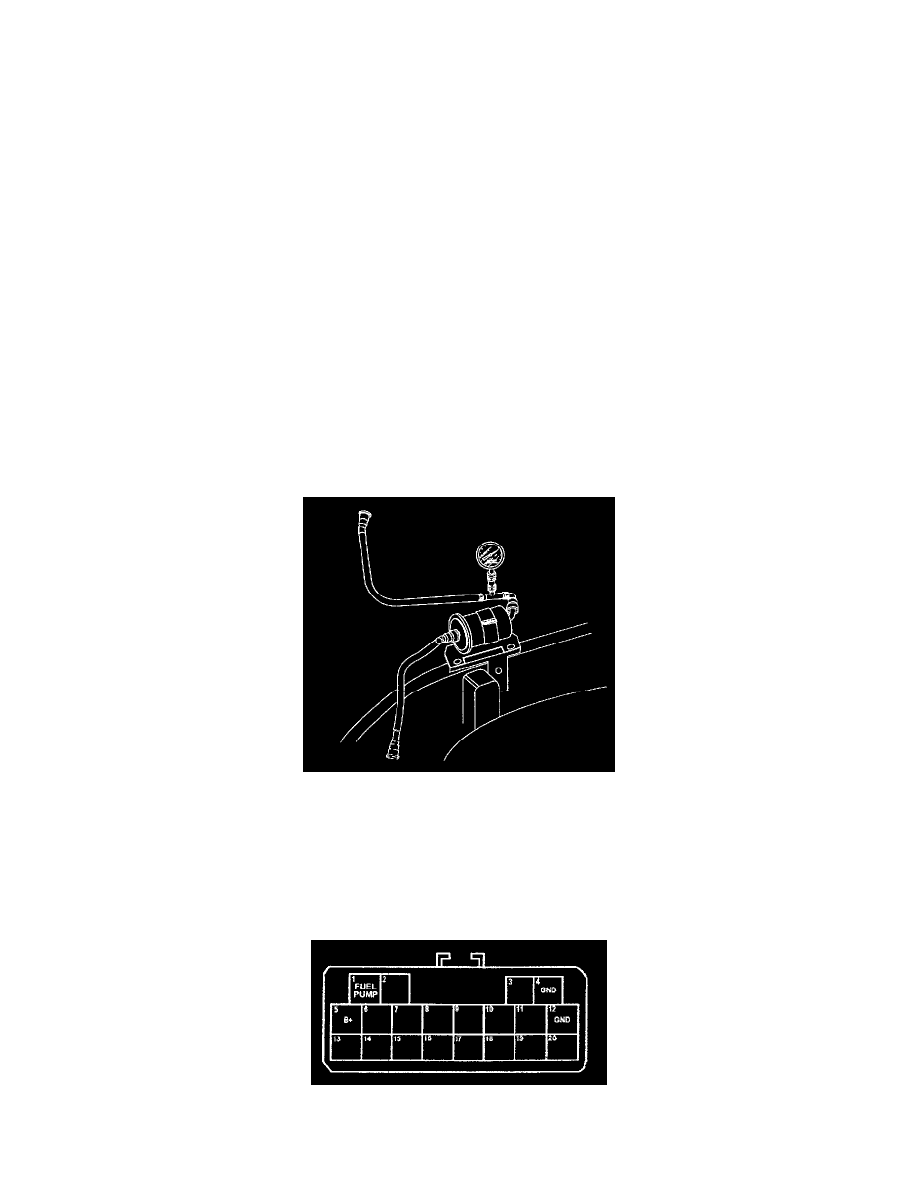Sportage 2WD 2Dr L4-2.0L (2002)

Fuel Pressure Regulator: Testing and Inspection
Fuel Line Pressure
1. Disconnect the negative battery terminal.
2. Release fuel system pressure. Refer to "Releasing Fuel System Pressure".
3. Connect a fuel pressure gauge to the pressure port located on the front of the fuel rail.
4. Connect the negative battery terminal.
5. Start the engine and run it at idle.
6. Inspect the fuel line pressure measurement.
Fuel line pressure: 34 psi (235 kPa)
7. Disconnect the vacuum hose from the pressure regulator and measure the fuel line pressure.
Fuel line pressure: 42 psi (292.5 kPa)
Hold Pressure
Do this inspection if the fuel line pressure inspection is not as noted.
1. Disconnect the negative battery terminal.
WARNING: THE FUEL SYSTEM REMAINS UNDER PRESSURE WHEN THE ENGINE IS NOT RUNNING. RELEASE FUEL
SYSTEM PRESSURE BEFORE DISCONNECTING ANY FUEL LINE TO REDUCE THE CHANCE OF PERSONAL INJURY OR
FIRE DAMAGE TO THE VEHICLE.
2. Release fuel system pressure. Refer to "Releasing Fuel System Pressure".
3. Connect a fuel pressure gauge to the pressure port located on the front of the fuel rail.
4. Connect the negative battery terminal.
5. Connect the data link connector terminals FUEL PUMP and B+ with a jumper wire.
6. Turn the ignition switch on for 10 seconds to run the fuel pump.
7. Turn the ignition switch off and remove the jumper wire.
8. Pinch the fuel return hose at the regulator with pliers.
9. Observe the fuel pressure for 5 minutes.
Fuel pressure: More than 21 psi (150 kPa)
10. If not as noted, replace the pressure regulator. Refer to the pressure regulator replacement steps located.
